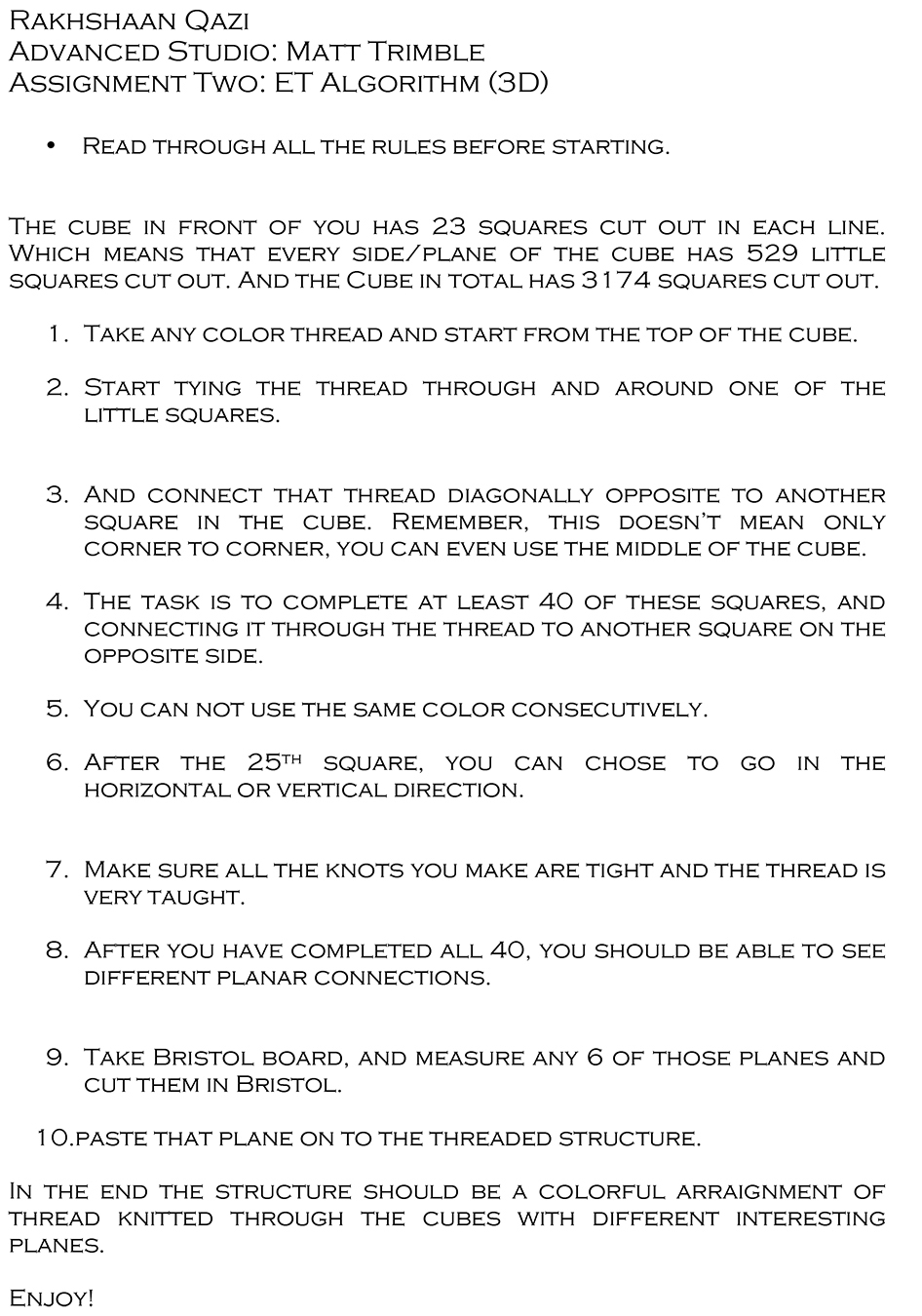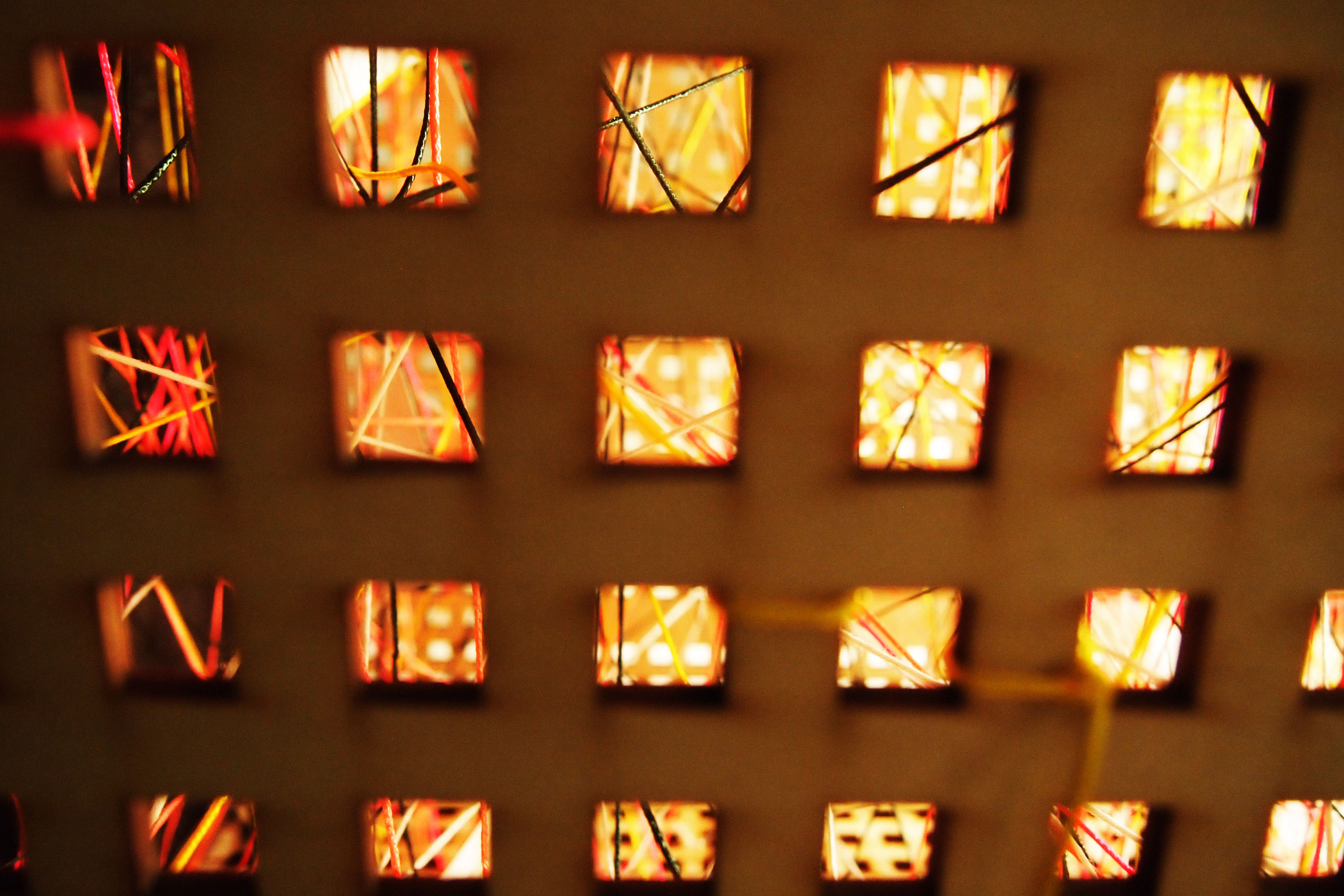ET Algorithm 2D and 3D
These were the first two projects of my first semester in Advanced Studio with Matthew Trimble. The projects are about designing algorithms and making other people make the project based on the algorithms you have set for them.
ET ALgorithm [2D]
Description:
A latin phrase meaning “and others” or “and the others,” et al invokes the rudiments of performance-based creation by instruction, wherein the work is brought into being by everyone but the author. The performers create the work by following the author’s algorithm, a set of rules used to explain a task or solve a problem.
In the vein of Sol LeWitt’s art by instruction, design an algorithm that will be used to produce a drawing. One at a time,your drawing will be completed by everyone in the studio, but you. Your canvas is 24x36 inches. Each of your artist colleagues will have 20 minutes to execute your instructions. Use your algorithm to simultaneously explore the unforeseeable potential of interpretation, and the inevitable predictability of a rule-based system. Carefully consider the time constraint. Practice following your own instructions by looking for the extreme limitations of interpretation.

My Algorithmic rules for part one.
Final piece. After everyone in studio had worked on it.

Detail

Detail
ET ALgorithm [3D]
Description:
Using the first project as a reference for the second, explore the potential of an array, a collection of objects determined by a singularly defined unit, repeated in space. Design and build a machine, in conjunction with an algorithm, that will assist your fabricator colleagues in the production of each unit in your array. Remember that a machine can be as simple as “a device that transmits or modifies force or motion” (dictionary.com).
While your fabricators will each be responsible for making one or many units, every unit should be differentiated from the rest. Your work space is 24x36x36 inches. Each of your colleagues will have 90 minutes to execute your instructions with the use of your design machine. As mentioned before, use your algorithm to simultaneously explore the unforseeable potential of interpretation, and the inevitable predictability of a rule-based system. Carefully consider the time constraint.
Practice following your own instructions by looking for the extreme limitations of interpretation.
Pay close attention to the relationship between the unit and the whole. Design an algorithm that will be applied to the manipulation/construction/production of each unit, as well as the manner in which each unit will relate to/connect with its neighboring unit(s). Your conglomeration of units should be self-supporting and should reach a minimum height of 24 inches. Make sure the combination of your rule set, your machine, and your material(s) is sufficiently robust to withstand the beating it will undoubtedly receive as each person interacts with what you’ve provided in their own way

My Algorithmic rules for part two.

Work In progress




